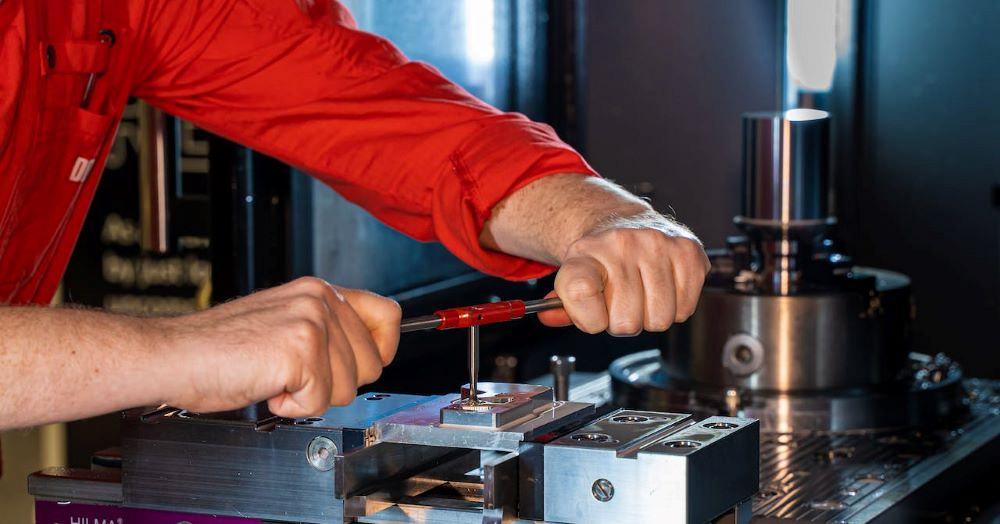Editor
- FMA
- The Fabricator
- FABTECH
- Canadian Metalworking
B.C. understands its manufacturing workforce dilemma
Making British Columbia manufacturing sustainable and stable
- By Joe Thompson
- January 29, 2024
Beautiful, British Columbia gets it.
The Pacific province is proving that it understands the reality that a manufacturing workforce gap currently exists, and without effort, it will only get worse.
Recently, the Dennis and Phyllis Washington Foundation, in conjunction with Seaspan and Southern Railway of British Columbia, donated $5.527 million to the British Columbia Institute of Technology (BCIT) to deliver trades training to high school students.
This was on the heels of a $1 million dollar donation to the school from the Gene Haas Foundation to open the new, and aptly named, Gene Haas Manufacturing Lab.
At the grassroots level, the British Columbia Metal Manufacturing Advisory Group, which comprises local manufacturing leaders, machine tool distributers, educators, and the Construction Foundation of B.C., continues to place Haas CNC desktop mills into local high schools thanks to the donations from local manufacturers, machine tool distributor Thomas Skinner, and local educators. Local manufacturing companies, their suppliers, charities, and educational institutions are coming together in an unprecedented way to show the province’s youth that manufacturing is a viable, attractive career option.
And believe it or not, the government gets it too. Earlier this year, the B.C. Manufacturing Jobs Fund made $180 million available to manufacturing companies to help them modernize, innovate, and grow their businesses by providing funding, including money for capital investment.
If this was a steeplechase, they’re simply running straight through all of the obstacles.
The throughline of all of this, however, is money.
Without donations, government funding, and local manufacturers willing to give back, none of this happens. It’s the combined power of all of the stakeholders that makes this situation special. It should be seen as a pilot project or case study on how to solve the skilled labour shortage, not in an industry-wide manner, but locally.
And when enough communities start doing this, or something similar, then it will solve the industry-wide manufacturing skills shortcoming. In short: A national problem gets solved by thinking—and acting—locally.
Money also matters when it comes to wage structure. According to online job board indeed.ca, the average job posting for a millwright has a wage of $38.35 per hour. For a mechanic, it’s $39.80 per hour and for an electrician, it’s $39.04 per hour. These are the jobs that you are competing against to secure the next generation of skilled workers for your shop.
The truth is these young people don’t want to be baristas or bartenders. They want a trade, and it’s up to you to deliver the job, salary, and workplace environment that will entice them.
subscribe now


Keep up to date with the latest news, events, and technology for all things metal from our pair of monthly magazines written specifically for Canadian manufacturers!
Start Your Free SubscriptionAbout the Author

Joe Thompson
416-1154 Warden Avenue
Toronto, M1R 0A1 Canada
905-315-8226
Joe Thompson has been covering the Canadian manufacturing sector for more than two decades. He is responsible for the day-to-day editorial direction of the magazine, providing a uniquely Canadian look at the world of metal manufacturing.
An award-winning writer and graduate of the Sheridan College journalism program, he has published articles worldwide in a variety of industries, including manufacturing, pharmaceutical, medical, infrastructure, and entertainment.
- Trending Articles
Automating additive manufacturing

Sustainability Analyzer Tool helps users measure and reduce carbon footprint

CTMA launches another round of Career-Ready program

Sandvik Coromant hosts workforce development event empowering young women in manufacturing

GF Machining Solutions names managing director and head of market region North and Central Americas

- Industry Events
MME Winnipeg
- April 30, 2024
- Winnipeg, ON Canada
CTMA Economic Uncertainty: Helping You Navigate Windsor Seminar
- April 30, 2024
- Windsor, ON Canada
CTMA Economic Uncertainty: Helping You Navigate Kitchener Seminar
- May 2, 2024
- Kitchener, ON Canada
Automate 2024
- May 6 - 9, 2024
- Chicago, IL
ANCA Open House
- May 7 - 8, 2024
- Wixom, MI
















